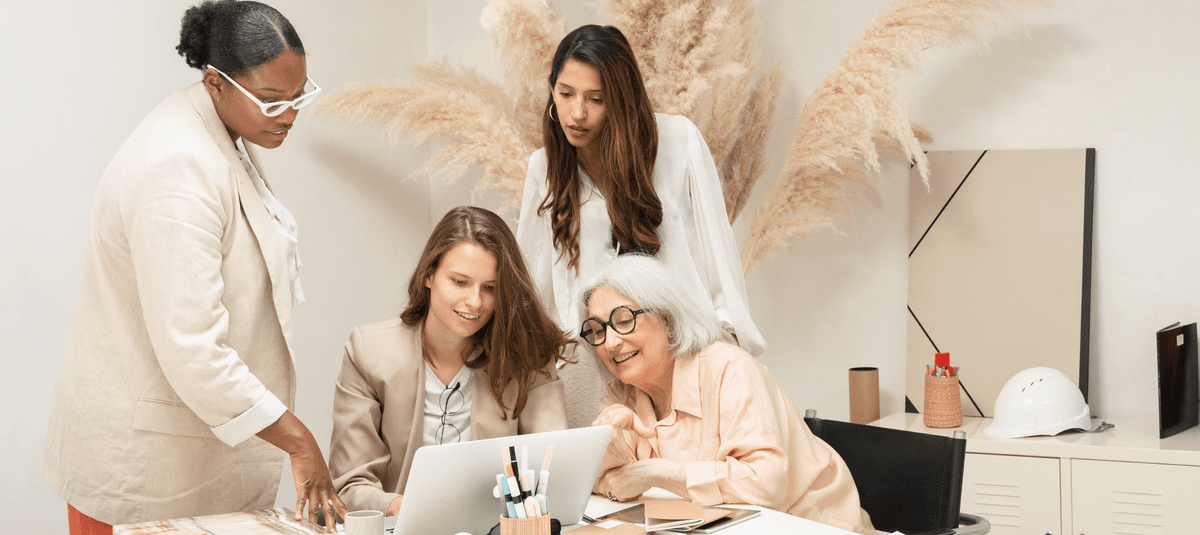Strength in Numbers: How Collaboration Fuels Strong Team Dynamics


Achieving success is rarely a solo endeavor — it's the collaborative efforts of diverse individuals coming together that often lead to remarkable achievements. This is where the concept of collaboration shines. Collaboration is not just about working together; it's about synergizing diverse strengths, ideas, and perspectives to achieve goals that might seem insurmountable for a single individual. In this article, we'll explore how collaboration serves as the cornerstone of strong team dynamics, driving teams toward unparalleled success.
Understanding Collaboration's Impact on Team Dynamics
Imagine a symphony orchestra. Each musician plays a different instrument, but when they collaborate under the guidance of a conductor, they produce a masterpiece. Similarly, in the professional realm, collaboration is the harmonious convergence of individual skills and insights to create something greater than the sum of its parts. Team dynamics, on the other hand, encompass the interactions, relationships, and roles within a team. When collaboration is effectively integrated into team dynamics, it becomes a catalyst for superior performance.
Foundations for Strong Team Dynamics
At the heart of any high-performing team are three essential building blocks: communication, trust, and respect. Effective communication ensures that ideas flow seamlessly, preventing misunderstandings and fostering a sense of unity. Trust and respect create a safe environment where team members feel valued, supported, and empowered to voice their opinions. Collaboration acts as the glue that binds these building blocks together, as it necessitates clear communication, cultivates trust, and encourages respectful interactions.
Enhancing Communication for Stronger Team Bonds
In a collaborative setting, communication takes on a new dimension. The free exchange of ideas, insights, and information becomes the lifeblood of the team. When team members openly share their thoughts and actively listen to one another, a culture of innovation and understanding takes root. Collaborative environments provide a platform for brainstorming, problem-solving, and adapting to change more effectively. As individuals contribute their unique perspectives, they collectively create solutions that are richer and more comprehensive.
Fostering Trust and Respect through Collaborative Efforts
Trust and respect are the cornerstones of effective collaboration. In a collaborative team, trust is built through transparent communication and reliable execution of tasks. When team members witness each other's commitment to shared goals, trust deepens. Additionally, acknowledging and appreciating diverse viewpoints fosters mutual respect. Collaboration, by encouraging openness and valuing different perspectives, nurtures an environment where trust and respect thrive.
Working Together Towards Shared Goals for Team Unity
Shared goals provide teams with a sense of purpose and direction. Collaborative teams possess a clear understanding of these goals because they are discussed, refined, and embraced collectively. This shared understanding eliminates confusion and misalignment, allowing team members to channel their efforts toward a common objective. Collaboration ensures that everyone is on the same page, reinforcing the unity that shared goals bring.
Collaborative Problem-Solving: Strengthening Team Flexibility
In the face of challenges, collaborative teams have a unique advantage. They can draw from a diverse pool of skills and perspectives to tackle complex problems. When a team faces a multifaceted challenge, collaborative problem-solving brings together minds from various disciplines. This diversity leads to creative solutions that might not have been possible otherwise. Collaboration encourages flexibility and adaptability, which are crucial traits for addressing the ever-evolving challenges in today's dynamic world.
Addressing Challenges in Collaboration for Resilient Teams
While collaboration offers immense benefits, it's not without its challenges. Communication barriers, conflicting viewpoints, and divergent working styles can hinder the collaborative process. However, these challenges are not roadblocks but opportunities for growth. By acknowledging and addressing these challenges head-on, teams become more resilient. They learn to navigate differences, refine their communication, and strengthen their bonds through adversity. In this way, collaboration transforms challenges into stepping stones toward greater unity and effectiveness.
Transforming Teams through Collaboration Training
The impact of effective collaboration ripples across every aspect of a team's performance. Innovation thrives as ideas collide and merge, leading to breakthrough solutions. Problems are resolved swiftly as team members pool their expertise to find the best paths forward. EasyLlama’s mini-course on Building Strong Teams Through Collaboration educates employers and employees on how to assess and improve team dynamics in order to work together more effectively. Swift problem-solving can become second nature when the common language of EasyLlama’s Soft Skills training is harnessed. Learn more about EasyLlama’s modern content, interactive quizzes, and real-life video scenarios with a free course preview today!




